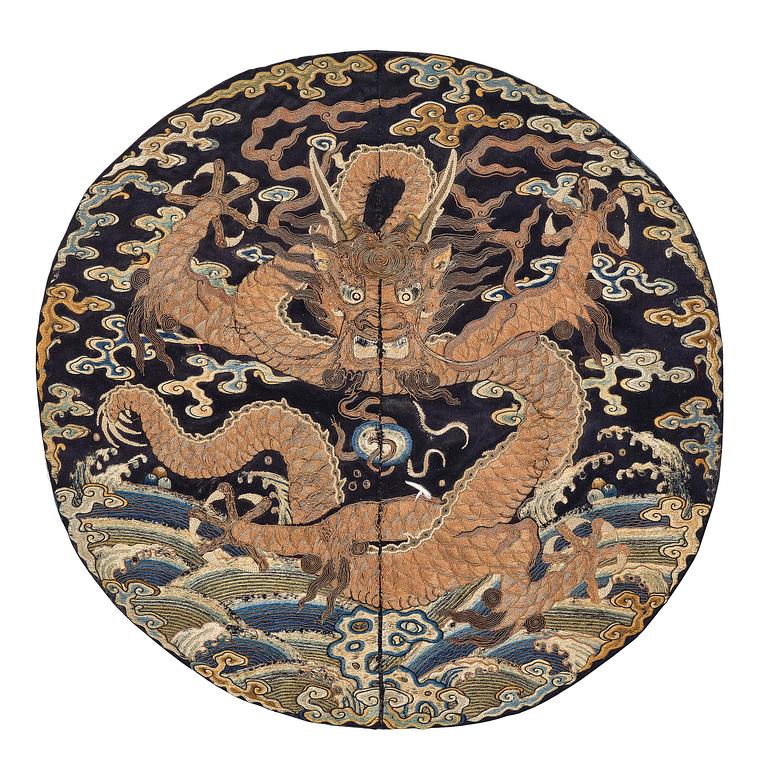Kejserlig insignia, broderat siden. Qingdynastin, 1700-talets mitt.
Fint vävd och broderad med en i gyllene femkload drake bland ruyiformade moln ovan vågor, mot en mörk grund. Fodrad i blått siden. Diameter ca 31 cm.
Slitage, fläckar.
Proveniens
Purchased from an antique dealer in 2000.
Property of a private Finnish Collection.
The collection was formed between 1980-2020, the collector has had an interest in China and Chinese Works of Art since childhood, growing up in Beijing. He returned to China in grownup years for work, he came to live in China altogether more than 40 years. His love of China, and Chinese works of art is mirrored in the collection and being an academic collector, he never got tired of learning more about the subject by studying literature, attending lectures, visiting museums, auction houses and befriending curators from Peking, Hong Kong, London, Paris, and Stockholm. The collection consists of both Chinese ceramics and textiles, This being part 2, a part of the textile collection.
Utställningar
Compare with a dragon roundel in the Collection of the Metropolitan Museum of Art in New York, Credit Line: Gift of Edna Bahr, 1962. Accession Number: 62.97.39a, b.
Litteratur
Illustrated Precedents for the Ritual Paraphernalia of the Imperial Court, published in 1759, tells us much about how Court attire was regulated by imperial decrees. The Chinese tradition of wearing rank badges (buzi), also known as Mandarin squares, to demonstrate civil, military or imperial rank began in 1391 during the Ming Dynasty (1368-1644), and continued throughout the Qing Dynasty (1644-1911).
These insignia were sewn onto or woven into the wearer’s garments to indicate their rank. Civil officials wore insignia with different bird species corresponding to their rank, while animals denoted military officers.
The fall of the Qing Dynasty in 1911 brought an end to rank insignia.






































